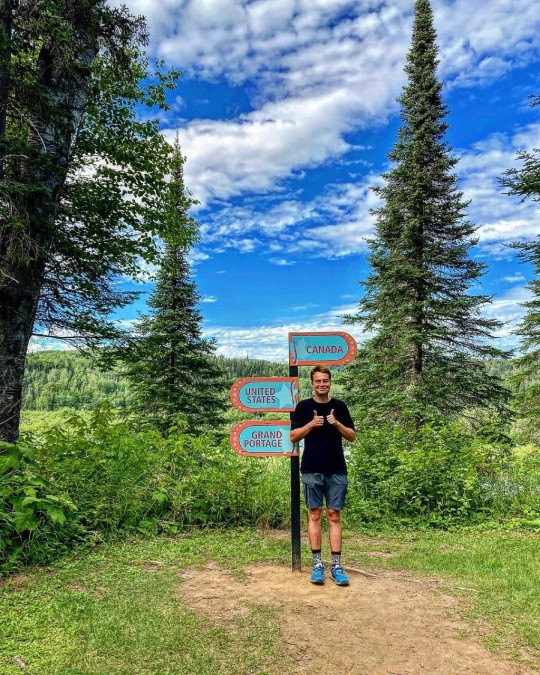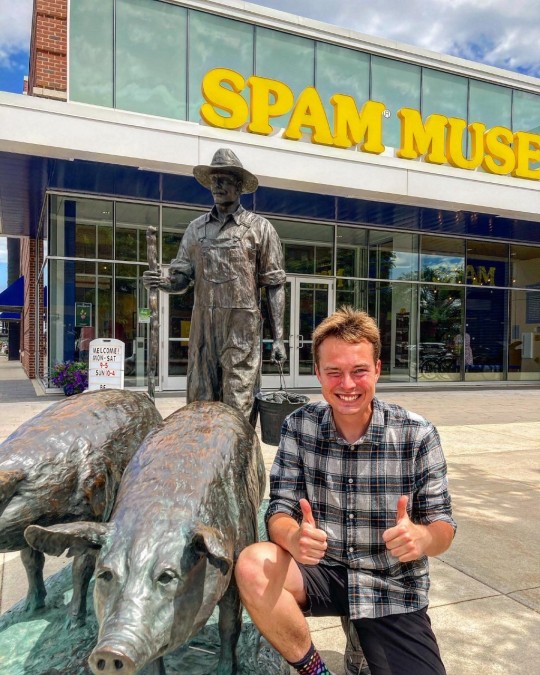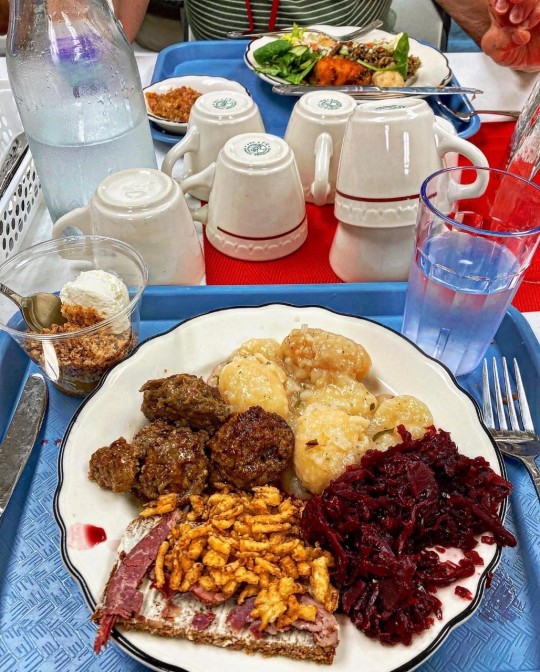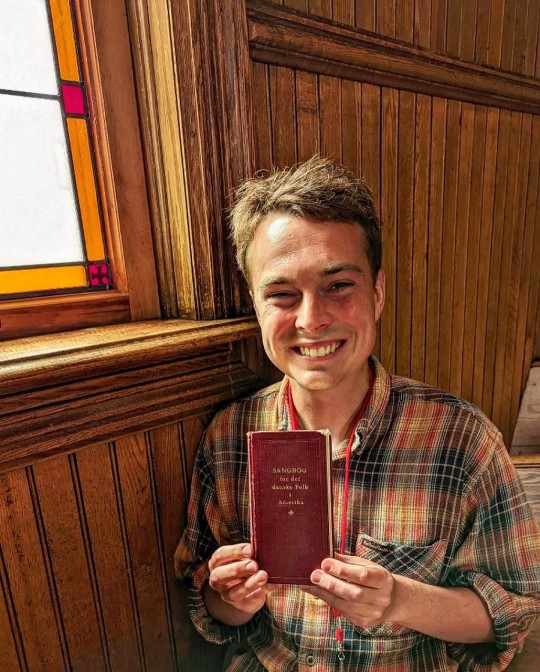#grundtvigianism
Text
The Minnesota Saga, Part II: Cruising the North Star State













There’s more to Minnesota than just the Twin Cities. After my visit to the Twin Cities, I decided to go explore some other parts of the state, starting with a drive up north. The first stop I made was in Duluth. Described by the author Sinclair Lewis as the "radiant, sea-fronting, hillside city,” I enjoyed watching the containerships against the swelling blue backdrop of Lake Superior. Then I began my drive along Highway 61. Situated along the North Shore of Lake Superior, this scenic drive provides an amazing view of Lake Superior, the largest of the Great Lakes. Its shining water is fresh, not salt. Actually, Lake Superior holds 10% of the world's surface fresh water.
After visiting Duluth, I continued my journey with a stop in Two Harbors, which is the home of legendary Betty’s Pie. Established in 1957, this place has been providing Minnesotans and pie lovers with the state’s finest pie. I went with a root beer float and a big slice of blueberry pie along with two scoops of vanilla ice-cream. Yum!
Then I was ready for some hiking. I visited Gooseberry Falls, Split Rock Lighthouse, Pellet Island, and Temperance River, as I made my way along Highway 61, enjoying all of Minnesota’s majestic beauty. I’ll save you the details for all of these wonderful destinations, instead jumping right to the final destination, and highlight, of my superior trip along Lake Superior: Grand Portage State Park.
Situated along the American-Canadian border, the High Falls of the Pigeon River is Minnesota’s tallest waterfall at 120-foot. The High Falls is at the end of a gentle paved trail and boardwalk, which make it very accessible to pretty much everybody. It’s also an interesting location, because the Pigeon River marks the American-Canadian border, and you can actually see the border checkpoint from the park entrance. I must also remember to mention the top-notch service of the park visitor center, who were really friendly and made me feel very welcome, suggesting routes and stuff to see in the area, but also explaining me about the culture of the Grand Portage Ojibwe people. This Native tribe has a brilliant seventh-generation philosophy, which basically means when you make decisions, you need to think about how those choices is going to affect seven generations into the future – a really refreshing perspective in today’s Western society, where short-term thinking seems to be the norm.
After going up north, my trip went to Minnesota’s Danish Heartland with a visit to Tyler to attend the annually Danebod Folk Meeting. Actually, it was the 76th of its kind, so this is a longtime tradition, dating back to the period after World War II.
The Danebod Folk Meeting takes place over four days and is held at the the Danebod campus, which features a folk school building with dormitory, a lecture hall, and a dining area, but also a gym hall, a museum, and a historic church, providing a perfect setting for its participants, where lectures, singing, stories, conversation, and folk dancing can take place.
The city of Tyler has a strong Danish heritage, and early settlers founded Danebod in the tradition of Grundtvigian-based Danish folk schools (in Danish: højskole), promoting the concept of ‘learning for living,’ with the goal of creating more enlightened citizens. The first Danish folk school in the United States was located in Elk Horn, but no longer exits, so the Danebod Folk School has a very unique position in Danish America.
When I arrived, I was truly amazed by the beauty of the Danebod area. The buildings are old, but well-maintained, and especially the wooden church impressed me with its beautiful stained-glass windows, where the sun light creates a very special atmosphere.
Each day was made up of different activities, such as lectures, singing and eating Danish meals together – and of course, drinking a lot of coffee and enjoying a great variety of snacks, such as Danish-style kringle, but also American-style Rice Krispies Treats. The experience reminded me very much of my days at Baunehøj Efterskole, just with elderly people. However, I would argue, that these Danebod folks probably had more energy!
My favorite lecture was about Russian invasion of Ukraine, and was performed by a dedicated history professor, who passionately informed us about the past of Ukraine and the nation’s difficult and tragic relationship with Russia. But the lectures covered a lot of different topics, such as feminism, Minnesota history, artificial intelligence, and Grundtvig’s influence on Christianity.
The food was also really great: We enjoyed meals such as medisterpølser with rødkål, open-faced sandwiches, and a lot of potatoes. Also, we had desserts such as risalamande and risengrød. That kitchen crew sure knew how make traditional Danish cuisine – it was just like being back at my grandmother’s dinner table.
As with folk schools back home, singing was a big part of the Danebod Folk Meeting: each morning and each evening we sang together for one hour. Even before lectures, we sang together. However, what was really unique, was the fact that participants could choose to sing in either Danish or in English, which created a quite interesting experience. Also, a lot of Grundtvig’s hymns, and other Danish songs, had been translated, so much of the music was familiar, just with a very different twist. I am not a big singer myself, but I find the power of music quite fascinating. It really creates community and a sense of belonging.
During the four days I made a lot of new friends and memories. I met Bente from California, who drove all the way from the Golden State to the U.S. Heartland to attend the folk meeting. I enjoyed Fred’s fantastic reflection about the Danish concept of ‘hygge.’ Anita taught me some basic folk-dance moves, but as I have no rhythm, it was a bigger task than you can imagine. I spoke Danish with Sonja, whom I also met at the Norway House reception in Minneapolis. I went for a long hike with Tim and saw the Tyler cemetery, witnessing how big an impact Danes had on this community. Also, a big thanks to Annette and Deb, who made sure I had a great experience at Danebod. And during the last night, the organizers had arranged for some of the best entertainment I have seen in a long time. The powerful duo of Dane Stauffer and Dan Chouinard provided great music and introduced me to the concept of the Great American Songbook. I happened to eat breakfast with them, where we talked about music. I mentioned that I like Elvis Presley, which made them incorporate Elvis into the evening show. As such, Dane and Dan took me by total surprise, when they made a shout-out to their new Danish friends and performed “Love Me Tender,” and my all-time Elvis favorite, "Can't Help Falling In Love.”
Sometimes I feel like the cultures of Danish America and contemporary Denmark is like two very different worlds. The Danes who immigrated to the United States came with traditions of their era. Many of these traditions is still very strong in Danish-American communities, while they are gone in modern Denmark.
Lastly, I also had the chance to visit Austin, Minnesota, which is the home to the SPAM Museum. Founded in 1891 in Austin, Hormel Foods is the city's largest employer. In 1937, Hormel changed food history when they invented SPAM, a brand of canned cooked pork, that would later help defeat Hitler. As fresh meat was difficult to get to the front during World War II, SPAM became a vital part of the U.S. soldier's diet. SPAM was also provided as aid to American allies during the war, such as the Soviet Union. Soviet Premier Nikita Khrushchev later stated the following in his memories: "Without Spam, we wouldn’t have been able to feed our army.”
Today, most people probably think of unwanted emails when they think of ‘spam.’ In 1970, Monty Python performed a sketch, in which chanting the word SPAM dominates the dialogue. This sketch gave birth to our modern understanding of the term ‘spam.’
The SPAM Museum is free, and the staff, called SPAMbassadors, is really friendly, providing visitors with stickers, samples of SPAM products, and wishing everybody an SPAMtastic day. Indeed, this museum is a unique little slice of Americana.
Best from Anders Tornsø Jørgensen
0 notes
Photo

Viggo Guttorm-Pedersen (April 9, 1902 - 1962) was a Danish painter and muralist, keen on Danish and Scandinavian history and mythology.
Here is a mural from Jaruplund - a Danish folk high school in Schleswig in Northern Germany, where a significant Danish minority still resides. It depicts, as the title goes, “Scandinavia in their Sunday Best” (1951)...
#art#danish artist#muralist#Jaruplund#schleswig#danish minority#sunday best#scandinavian history#norse mythology#viggo guttorm-pedersen#1950s#folk high schools#grundtvigianism
6 notes
·
View notes
Text
danish carols are so toothless compared to other language ones lmao I swear theyre all just "Jesus was born and saved us and isn't that nice (◡‿◡✿)"
3 notes
·
View notes